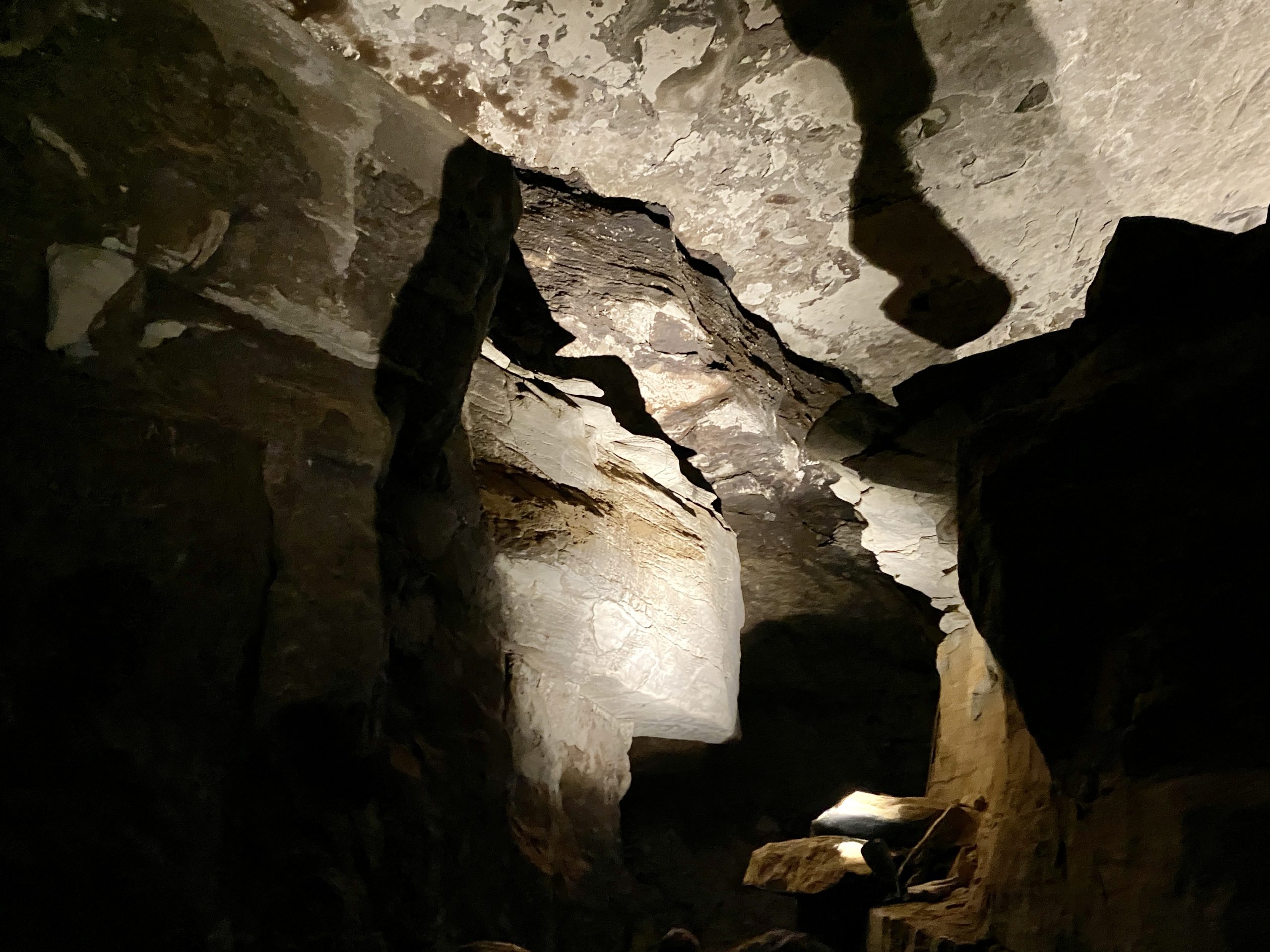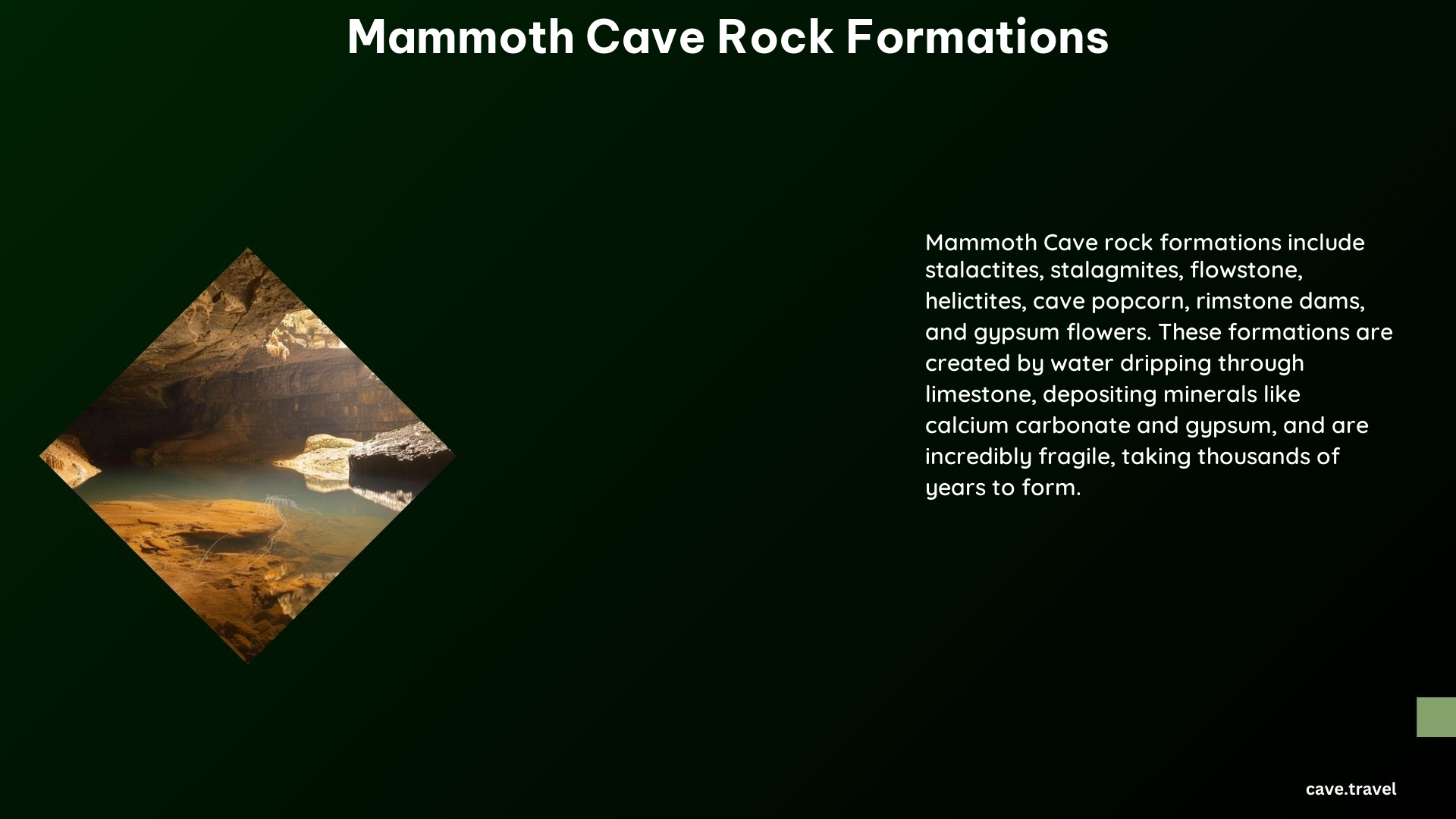Mammoth Cave, located in Kentucky, is a vast and complex cave system renowned for its diverse and fascinating rock formations. From the iconic stalactites and stalagmites to the intricate gypsum crystals, this underground wonder offers a mesmerizing display of nature’s artistry. Join us as we delve into the captivating world of Mammoth Cave’s rock formations and uncover the geological wonders that make this cave system truly remarkable.
Types of Rock Formations in Mammoth Cave

Mammoth Cave is home to a diverse array of rock formations, each with its unique characteristics and formation processes. Let’s explore the most prominent types:
- Stalactites and Stalagmites:
- These icicle-shaped deposits form when water dissolves limestone and re-deposits calcium carbonate along the ceilings or floors of the cave.
-
Stalactites hang from the ceiling, while stalagmites rise from the floor, creating a mesmerizing display.
-
Flowstone:
- Flowstone refers to sheets of calcium carbonate that form along cave walls, often creating curtain-like draperies.
-
The most notable flowstone formation in Mammoth Cave is the Frozen Niagara, a stunning display of cascading limestone.
-
Helictites:
- Helictites form in areas with minimal water seepage, creating strange, branch-like shapes that defy gravity.
-
These unique formations can be seen along the Great Onyx Lantern Tour.
-
Cave Popcorn:
- Cave Popcorn refers to knobs of calcite that form where water seeps through pores in limestone, creating clusters resembling popcorn, peas, or grapes.
-
This captivating formation can be observed along the Grand Avenue and Domes and Dripstone Tour.
-
Rimstone Dams:
- Rimstone dams form along floors where calcite-rich water pools, growing larger as more calcite is deposited.
-
These structures can be seen in the Frozen Niagara section of the cave.
-
Gypsum Formations:
- Gypsum is a mineral that forms in dry areas of the cave, often seen as delicate white crystals.
- It can also grow as crystals in the dirt along some cave passages, adding to the cave’s enchanting beauty.
Geology and Cave Formation

Mammoth Cave’s rock formations are the result of a complex geological history spanning millions of years. Understanding the underlying geology is key to appreciating the formation of these captivating structures.
- Limestone:
- Limestone is the most common rock in Mammoth Cave, formed about 330 million years ago from calcium carbonate minerals in a shallow ocean.
-
The chemical makeup and ability of limestone to be dissolved by acidic groundwater allow for the formation of cave passages.
-
Shale:
- Shale forms when wet swampy clays and muds are compressed over millions of years, serving as a caprock that protects the limestone layers and cave system from leaks.
-
This is one of the reasons why much of Mammoth Cave is dry.
-
Sandstone:
- Sandstone forms when tiny particles of sand, minerals, weathered rocks, and organic materials are compressed together tightly.
- The Big Clifty Sandstone is a prominent sandstone formation in Mammoth Cave, formed about 320 million years ago.
Diverse Cave Passages
Mammoth Cave’s rock formations are not limited to the walls and ceilings; the cave system itself is a testament to the intricate geological processes that have shaped its passages over time.
- Canyon Passages:
- These passages are formed by underground streams that follow tilted layers of limestone, eroding channels downward through the bedrock.
-
They are usually taller than they are wide, resembling canyons.
-
Large Canyon Composite Passages:
- These passages form from several passages eroding together, often with a mix of canyon and tube components.
-
Many upper tour routes in Mammoth Cave follow these large canyon composite passages.
-
Tube Passages:
- Tube passages are wide, oval-shaped tunnels that formed while filled with flowing water.
-
They are found in lower levels of the cave, where the water table would have been.
-
Vertical Shafts:
- Vertical shafts form where limestone beds display vertical cracks, allowing water to flow straight down.
-
They can range in size from 30 feet to 200 feet tall.
-
Keyhole Passages:
- Keyhole passages have an oval top and a narrow passage extending down vertically from the oval, formed by changing water levels.
- Fat Man’s Misery on the Historic Tour is an excellent example of a keyhole passage.
Exploring Mammoth Cave
Visitors to Mammoth Cave can embark on a journey of discovery, exploring the diverse rock formations and geological wonders that make this cave system truly unique. The park offers a variety of tours, including the Historic Tour, Grand Avenue Tour, and Domes and Dripstone Tour, each showcasing different aspects of the cave’s captivating rock formations.
Whether you’re a seasoned cave enthusiast or a curious explorer, Mammoth Cave’s rock formations are sure to leave a lasting impression. Prepare to be amazed by the intricate and ever-evolving beauty of this underground wonder.
References
National Park Service. (2021). How Mammoth Cave Formed. Retrieved from https://www.nps.gov/maca/learn/nature/how-mammoth-cave-formed.htm
National Park Service. (2023). Stalactites, Stalagmites, and Cave Formations. Retrieved from https://www.nps.gov/maca/learn/nature/stalactites-stalagmites-and-cave-formations.htm
National Park Service. (2021). Rocks of Mammoth Cave. Retrieved from https://www.nps.gov/maca/learn/nature/rocks-of-mammoth-cave.htm
U.OSU. (n.d.). Cave Formations. Retrieved from https://u.osu.edu/mammothcave/geology-of-the-park/cave-formations/
National Park Service. (2021). Geology. Retrieved from https://www.nps.gov/maca/learn/nature/geology.htm
